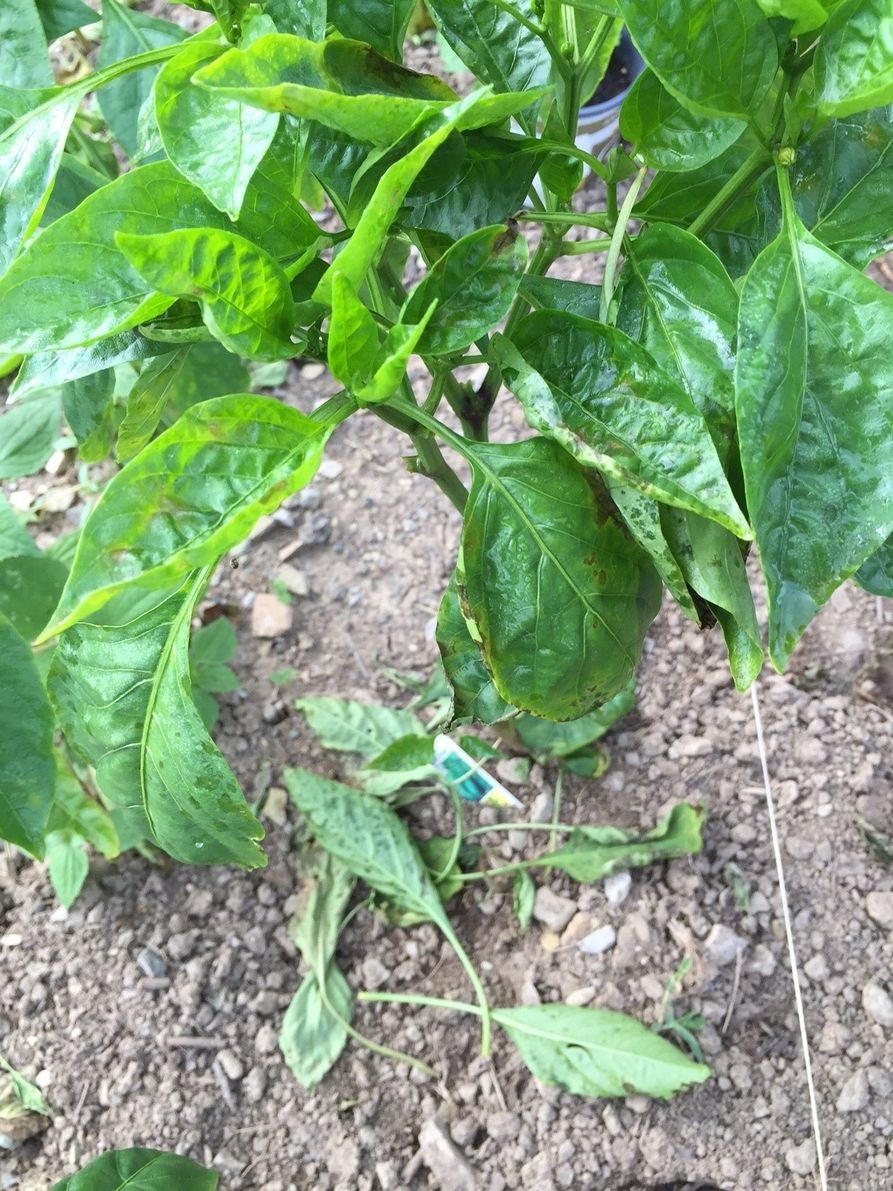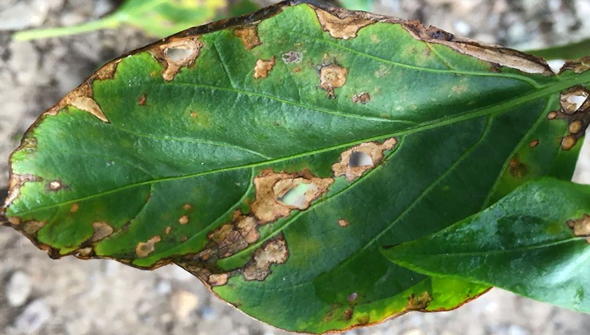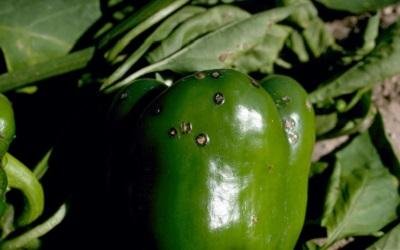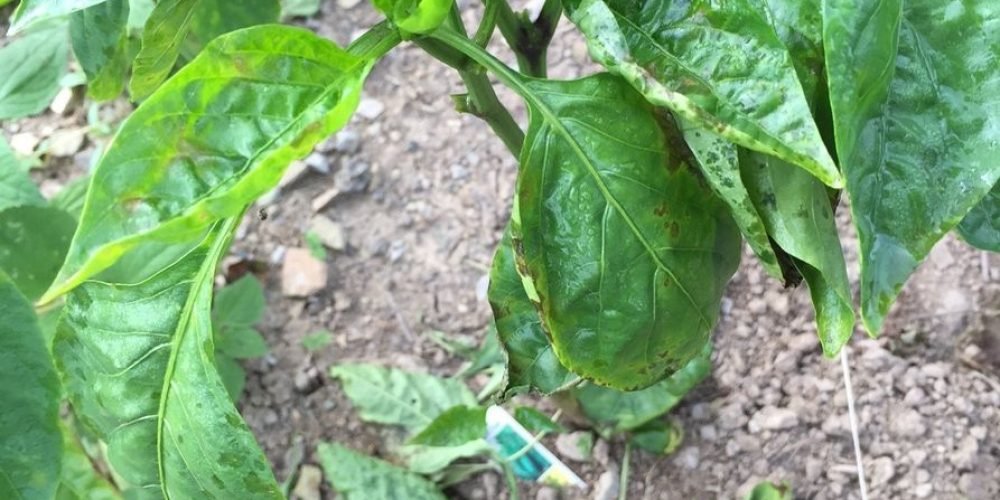
Disease name: Bacterial spot on sweet pepper leaves
The scientific name: Xanthomonas campestris
Type of disease: bacterial
Disease family: Xanthomonadaceae
(Infection of pepper plants with bacterial spot)
- The causes of disease:
This bacteria mainly infects the leaves of sweet pepper plants and can cover more than 80% of the leaf area, but it may also infect the fruits and stems. The bacteria infect the field by handling infected plants and through rain and wind.
- Symptoms of the disease:
Early symptoms of the disease appear as water-soaked spots on the leaves that can quickly change from green to dark brown. Over time, these spots dry out in less humid weather, allowing damaged tissue to fall off, which results in a ragged appearance on affected leaves.
- Disease development cycle:
Leaf spot bacteria live in seeds and plant debris and may remain there for at least a year. Once the infected plant remains decompose and the bacteria are exposed to the soil, they cannot survive for more than a few weeks.

(Infection of sweet pepper leaves with bacterial spot)
- Conditions suitable for the spread of the disease:
The disease develops due to relative humidity exceeding 85%, long periods of leaf wetness and temperatures exceeding 20°C. Low humidity for three consecutive weeks stops the spread and development of the disease.
- Losses resulting from the spread of the disease:
When the leaves of the sweet pepper plant fall, the fruits are exposed to sunburn, which reduces the plant’s productivity. Although the bacterial infection does not directly cause rotting of the fruits, it provides an entrance for other pathogens, which leads to the decay of the sweet pepper fruits, which makes them unmarketable.

(Spotting of sweet pepper fruits due to bacterial spot)
- Control:
- Remove infected plants to limit the spread of bacteria and dispose of them away from the field.
- Spraying the crop with a copper pesticide to slow the spread of the infection.
- Treat the seeds by soaking them for two minutes in a solution containing 10% chlorine, then rinse the seeds well and dry them before planting.
- Avoid overhead watering.
- preventive measures:
- Ensure that seeds and seedlings are free of disease.
- Continuously monitor the field for early detection of infection.
- Choose disease-resistant varieties.
- Sterilize agricultural tools before using them.
- Good fertilization of the plant.



